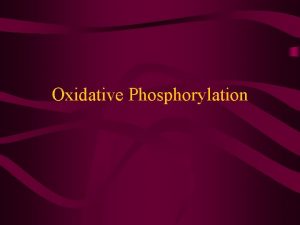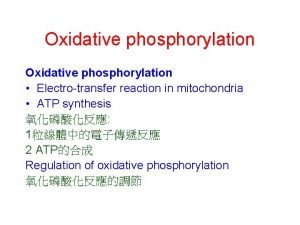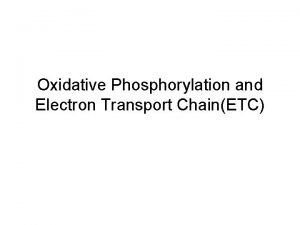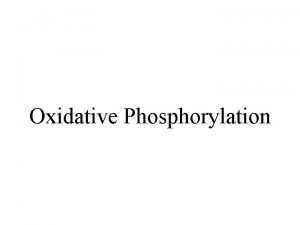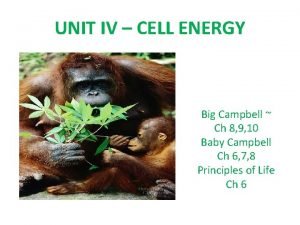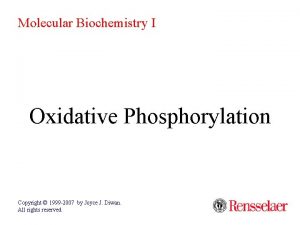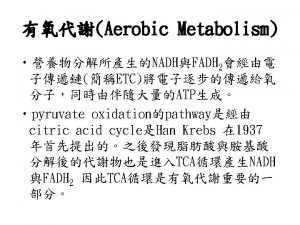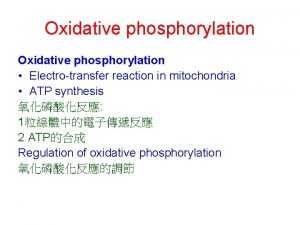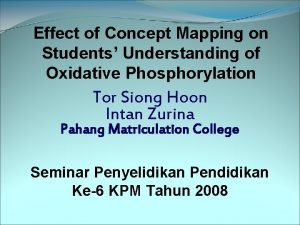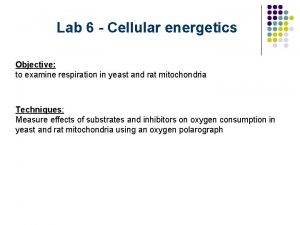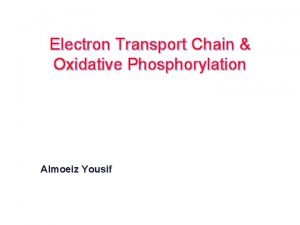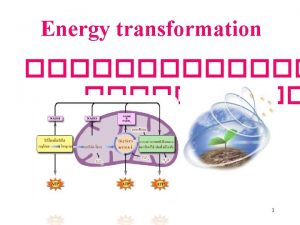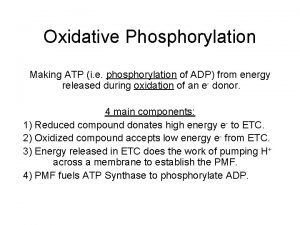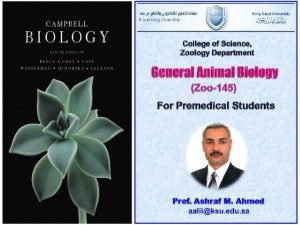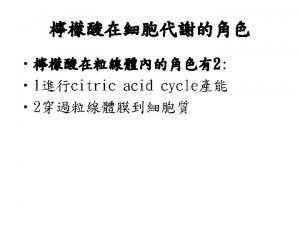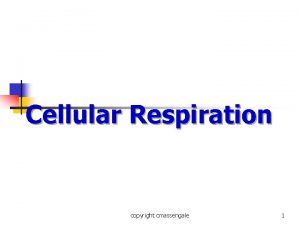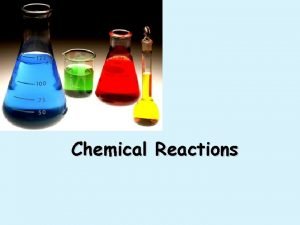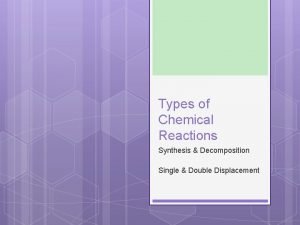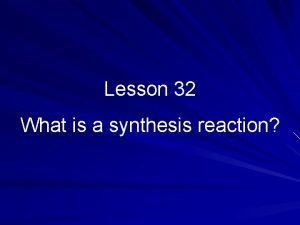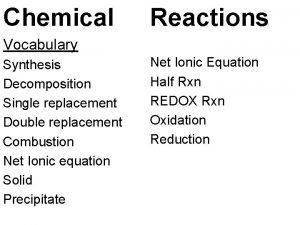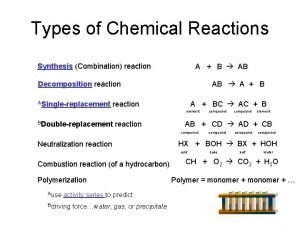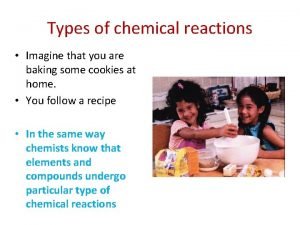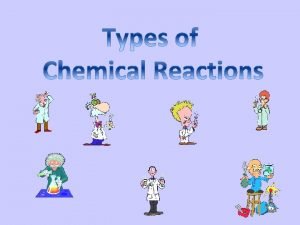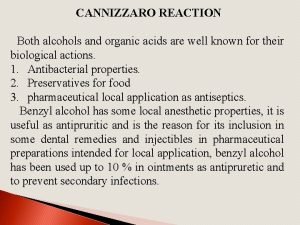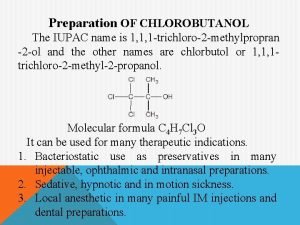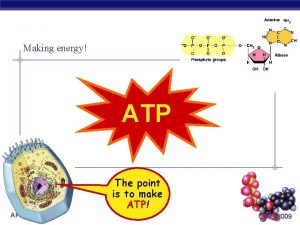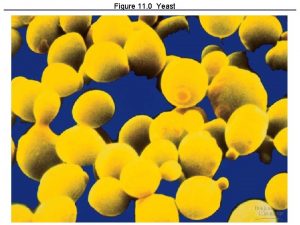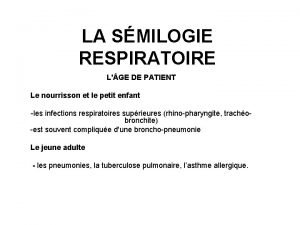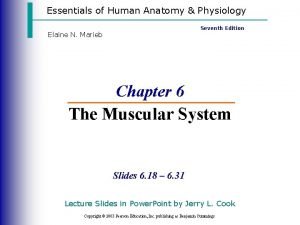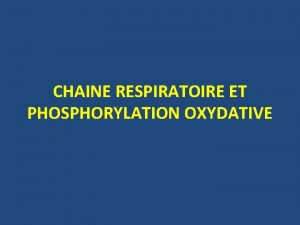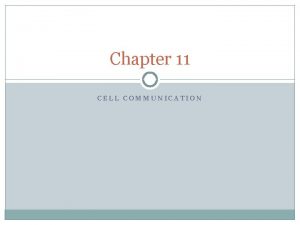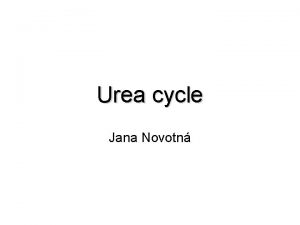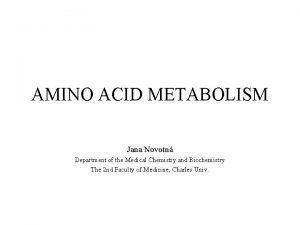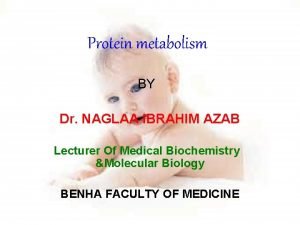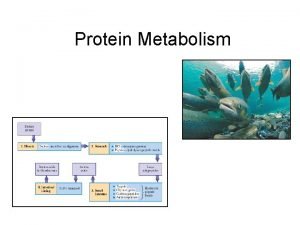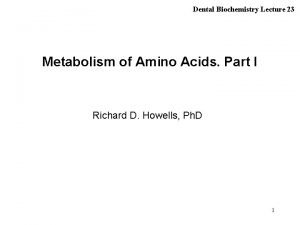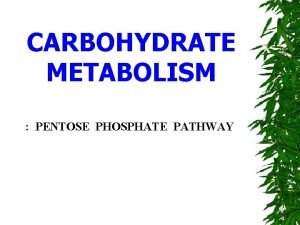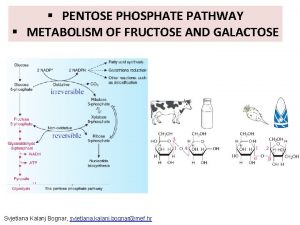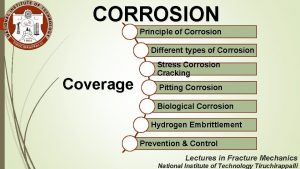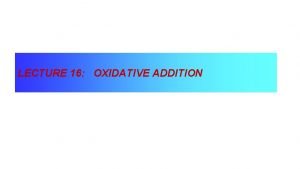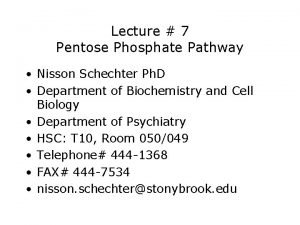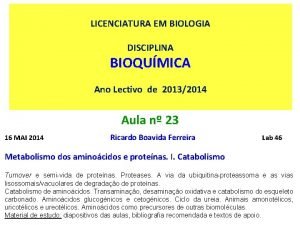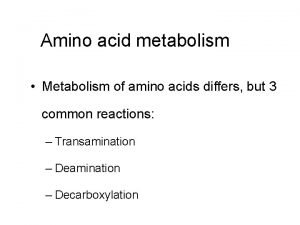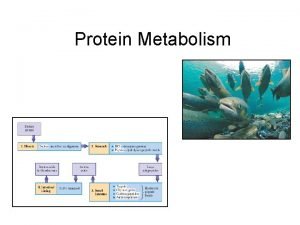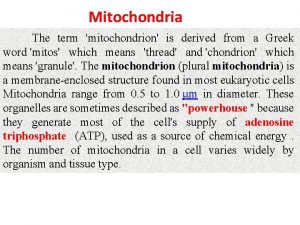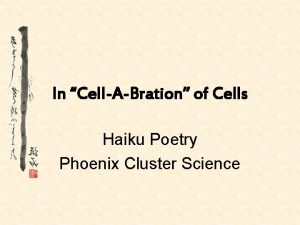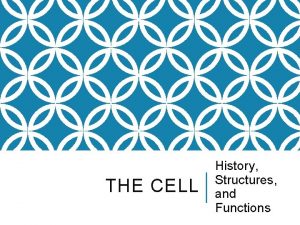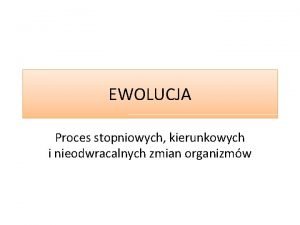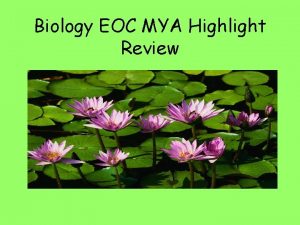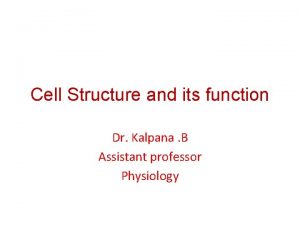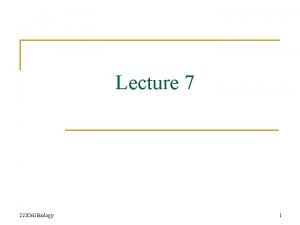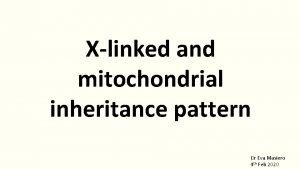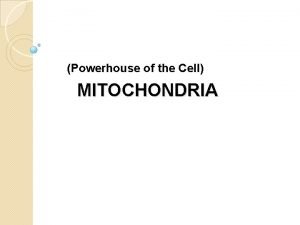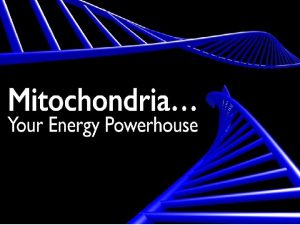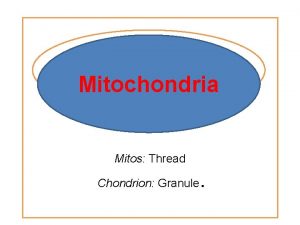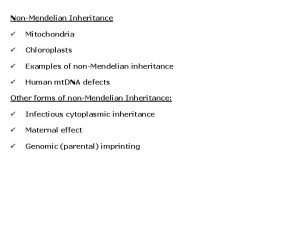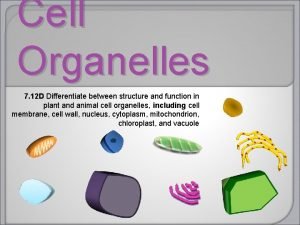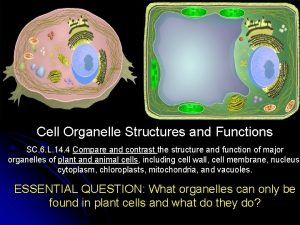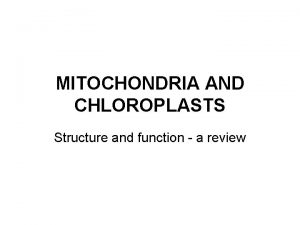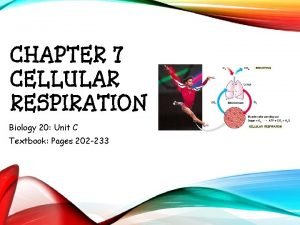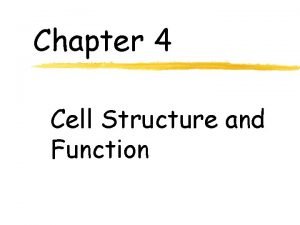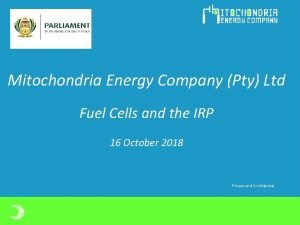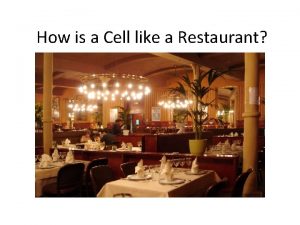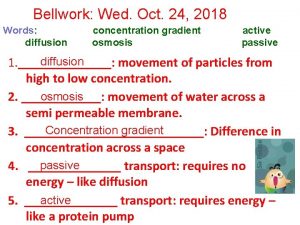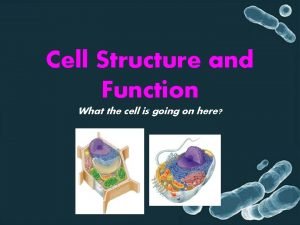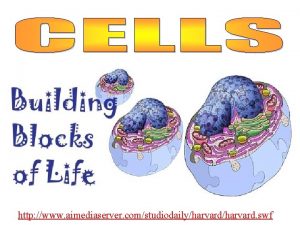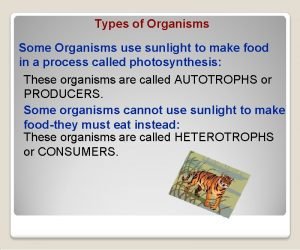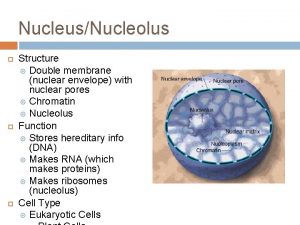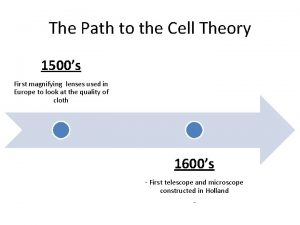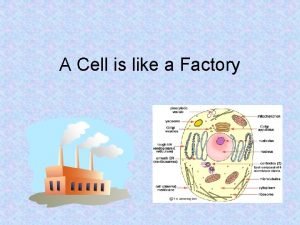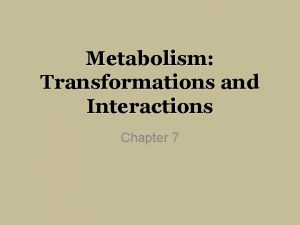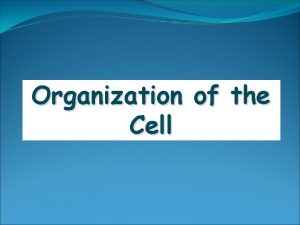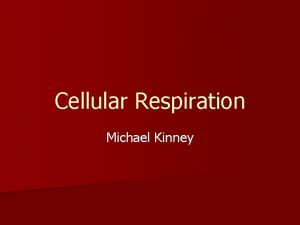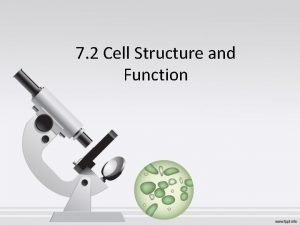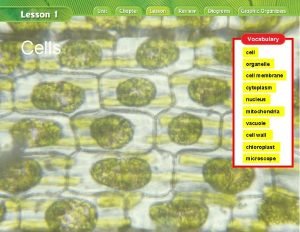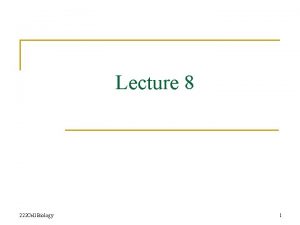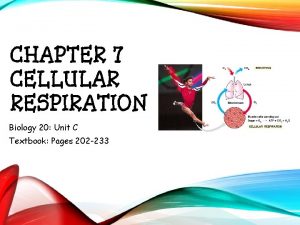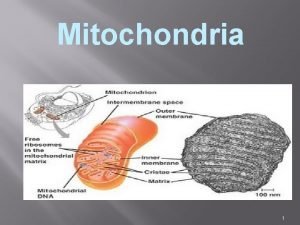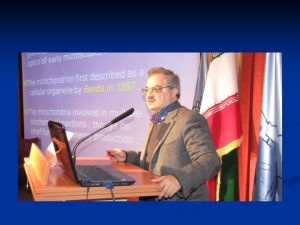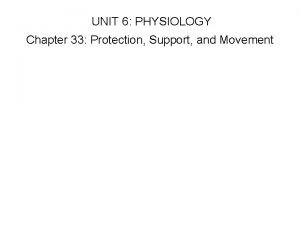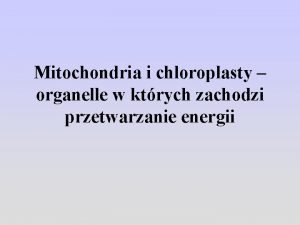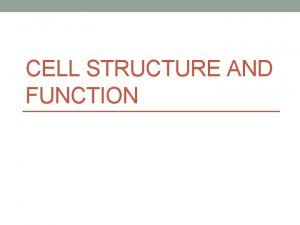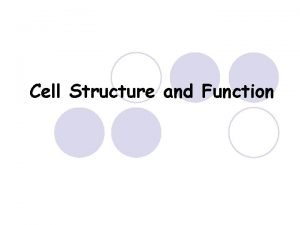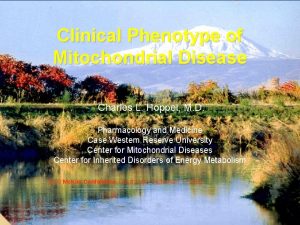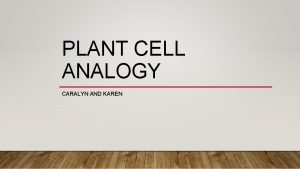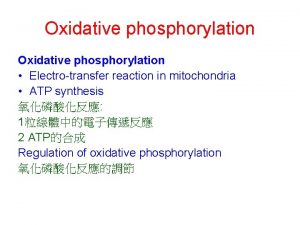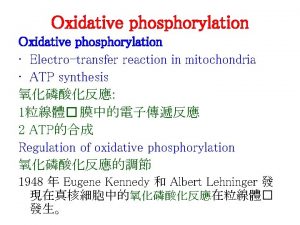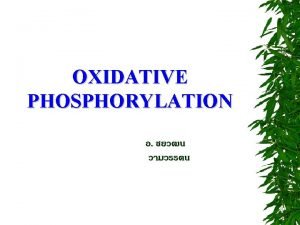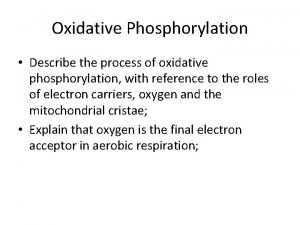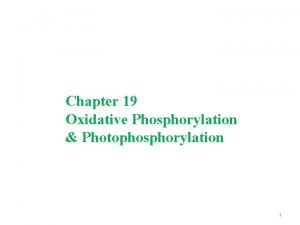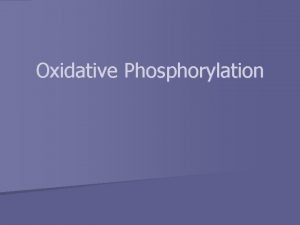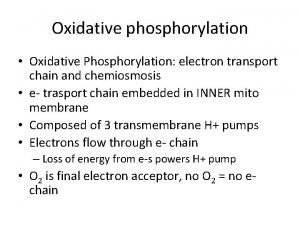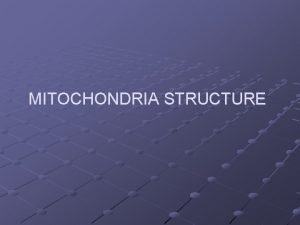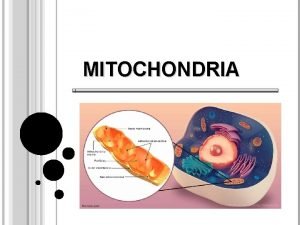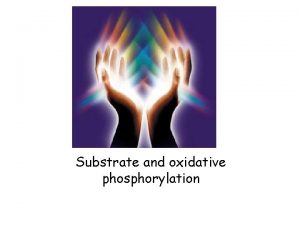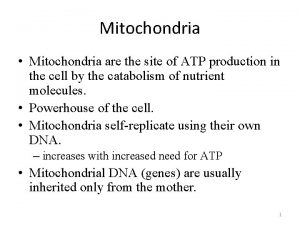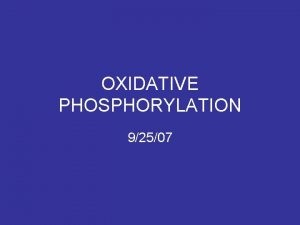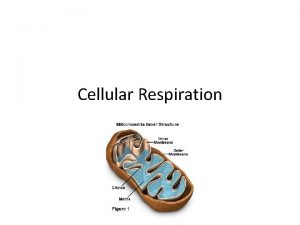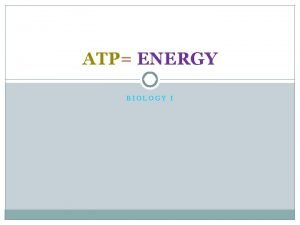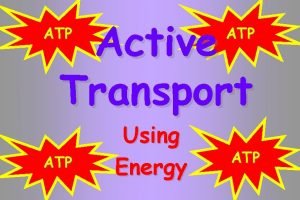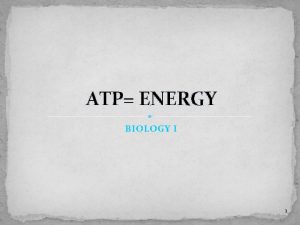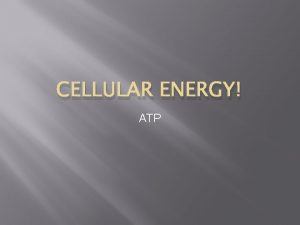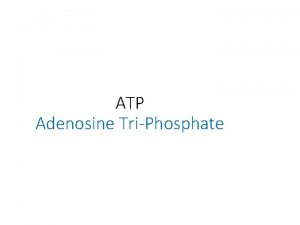Oxidative phosphorylation Electrotransfer reaction in mitochondria ATP synthesis










































































































- Slides: 106

Oxidative phosphorylation • Electro-transfer reaction in mitochondria • ATP synthesis 氧化磷酸化反應: 1粒線體中的電子傳遞反應 2 ATP的合成 Regulation of oxidative phosphorylation 氧化磷酸化反應的調節

• In eukaryotes, oxidative phosphorylation occurs in mitochondria • Oxidative phosphorylation involves the reduction of O 2 to H 2 O with electrons donated by NADH and FADH 2, and occurs equally well in light or darkness. • 真核細胞,氧化磷酸化反應發生在粒線體,日夜 皆在進行。是將NADH and FADH 2與O 2進行氧 化還原成水,釋出的能量轉換ATP的作用。

• Our current understanding of ATP synthesis in mitochondria is based on the hypothesis , introduced by Peter Mitchell in 1961, that transmembrane differences in proton concentration are the reservoir for the energy extracted from biological oxidation reaction. • ATP的合成是遵守化學滲透偶合理論(Peter Mitchell in 1961 提出)方式進行。即氧化還原 所生的能量以膜內外不同的質子濃度方式儲存。

Electron-transfer reactions in mitochondria • The discovery in 1948 by Eugene Kennedy and Albert Lehninger that mitochondria are the site of oxidative phosphorylation in eukaryotes. • 1948年Eugene Kennedy and Albert Lehninger 發現真核細胞,氧化磷酸化反應發生在粒線體。

• Mitochondria have two membranes. The outer mitochondrial membrane is readily permeable to small molecules (Mr < 5000) and ions, which move freely through transmembrane channel called porins. • 粒線體有兩層膜,外膜可通透小分子(Mr < 5000)與離子。

• The inner membrane is impermeable to most small molecules and ions, including protons; the only species that cross the inner membrane are those for which there are specific transporters. • 內膜則無法通透小分子(Mr < 5000)與離 子與蛋白質。需透過蛋白輸送器(protein transporters)才行。

Biochemical anatomy of a mitochondrion 粒線體的生物構造

Electrons are funneled to university electron acceptors • Oxidative phosphorylation begins with the entry of electrons into the respiratory chain. • 氧化磷酸化反應始於電子進入呼吸傳遞鏈 • universal electron acceptors-nicotinamide nucleotides (NAD+ or NADP+) or flavin nucleotides (FMN or FAD). • 電子是由去氫酵素(dehydrogenase)催化產生, nicotinamide nucleotides(NAD+) 或 flavin nucleotides ( FAD)是暫時接受者。


• NADH and NADPHare water-soluble electron carriers that associate reversibly with dehydrogenases. NADH 與 NADPH是水溶性的電子攜帶者,且與 dehydrogenase可逆結合。 • Neither NADH nor NADPH can cross the inner mitochondrial membrane, but the electrons they carry can be shuttled across indirectly. • NADH 與 NADPH是無法通過粒線內膜, 但電子可經由間接的管道進入。

• Flavoproteins contain a very tightly, sometimes covalently, bound flavin nucleotide, either FMN or FAD. • The oxidized flavin nucleotide can accept either one electron (yielding the semiquinone form) or two (yielding FADH 2 or FMNH 2). • 黃素蛋白上會共價結合FMN 或FAD,至多可結 合兩個電子。

Electrons pass through a series of membrane-bound carriers • 電子通過一系列膜結合的攜帶者(膜蛋白) Three types of electron transfers occur in oxidative phosphorylation: (1) direct transfer of electrons, as in the reduction of Fe 3+ to Fe 2+; (2) transfer as a hydrogen atom (H+ + e-); and (3) transfer as hydride ion (: H-), which bears two electrons. 三種電子傳遞形式出現於oxidative phosphorylation

• In addition to NAD and flavoproteins, three other types of electron-carrying molecules function in the respiratory chain: a hydrophobic quinone (ubiquinone) and two different types of iron-containing proteins (cytochromes and iron-sulfur proteins). • 除了NAD與黃素蛋白外,還有幾種電子 攜帶分子在respiratory chain中。包含 Coenzyme Q,含鐵蛋白(含 cytochromes與硫鐵蛋白)。

Ubiquinone • also called coenzyme Q, or simply Q. • is a lipid-soluble benzoquinone with a long isoprenoid side chain. • Coenzyme Q是油性的benzoquinone共 價結合長鏈的異戊二烯(一般約重複9 -10次) 稱Q 9或Q 10

Ubiquinone can accept one electron to become the semiquinone radical (QH·) or two electrons to form ubiquinol (QH 2) and , like flavoprotein carriers, it can act at the junction between a twoelectron donor and one-electron acceptor.

Cytochromes 細胞色素蛋白 • Are proteins with characteristic strong absorption of visible light, due to their iron-containing heme prosthetic groups. • 細胞色素蛋白是含血基質(heme)與鐵的蛋白 • Mitochondria contain three classes of cytochromes, designated a, b and c, distinguished by differences in their light -absorption spectra. • 粒線體含三種細胞色素蛋白稱cytochromes a, b and c,是因其吸光性質不同而區分。

• The heme cofactors of a and b cytochromes are tightly, but not covalently, bound to their associated proteins; the hemes of c-type cytochromes are covalently attached through Cys residues. • Cytochromes a與b中的heme與蛋白緊 密結合, cytochromes c中的heme則 與蛋白共價結合。

Prosthetic groups of cytochromes. Each consists of four fivemembered, nitrogen-containing rings in a cyclic structure called a porphyrin. The four nitrogen atoms are coordinated with a central Fe ion, either Fe 2+ or Fe 3+.

Iron-sulfur centers硫鐵蛋白

Methods for determining the sequence of electron carriers 還原半電位表

In the presence of an electron donor and O 2, each inhibitor causes a characteristic pattern of oxidized/reduced carriers; those before the block become reduced (blue), and those after the block become oxidized (red). 電子傳遞鏈中電子傳遞順序與其阻斷劑。

Electron carriers function in multienzyme complexes The electron carriers of the respiratory chain are organized into membraneembedded supramolecular complexes that can be physically separated. 呼吸鏈的電子攜帶者是位於膜中的巨大 蛋白複合物,且可分離出。

Separation of functional complexes of the respiratory chain 分離呼吸鏈具功能的複合體



Electron-transferring flavoprotein (ETF) Path of electrons from NADH, succinate, fatty acyl-Co. A, and glycerol 3 -phosphate to ubiquinone. 電子的傳遞路徑

NADH: ubiquinone oxidoreductase (or NADH dehydrogenase) (complex I)複合體I

Complex I: NADH to Ubiquinone • Complex I is also called NADH: ubiquinone oxidoreductase or NADH dehydrogenase. • 複合體I又稱NADH: ubiquinone oxidoreductase 或 NADH dehydrogenase • Complex I is a large enzyme composed of 42 different polypeptide chains, including an FMN-containing flavoprotein and at least six iron-sulfur centers. • Complex I是一個巨大酵素體,含FMN的黃素 蛋白與硫鐵蛋白。

Complex I catalyzes two simultaneous and obligately coupled processes: (1) the exergonic transfer to ubiquinone of a hydride ion from NADH and a proton from the matrix: NADH + H+ + Q NAD+ + QH 2 (2) the endergonic transfer of four protons from the matrix to the intermembrane space. Complex I同時具兩種作用: 1電子傳遞。2 質子的輸送。

Ubiquinol (QH 2) • Ubiquinol (QH 2) diffuses in the inner mitochondrial membrane from Complex I to Complex. III, where it is oxidized to Q in a process that also involves the outward movement of H+. • Ubiquinol (QH 2)將電子傳給Complex III


Complex II: Succinate to Ubiquinone • Complex II also called as succinate dehydrogenase, the only membranebound enzyme in the citric acid cycle. • Complex II contains five prosthetic groups of and four different protein subunits. • 複合體 II又稱succinate dehydrogenase,是TCA cycle中唯一 的膜蛋白複合體,含硫鐵,血基質與FAD 等輔基。

Structure of Complex II

Other substrates for mitochondrial dehydrogenase pass electrons into the respiratory chain at the level of ubiquinone, but not through Complex II

Complex III: Ubiquinone to cytochrome c • Complex III is also called cytochrome bc 1 complex or ubquinone: cytochrome c oxidoreductase. • Complex III又稱cytochrome bc 1 complex or ubquinone: cytochrome c oxidoreductase. 亦 具兩種作用: 1電子傳遞。2質子的輸送。

Complex IV: Cytochrome c to O 2 • Complex IV is also called cytochrome oxidase and carries electrons from cytochrome c to molecular oxygen, reducig it to H 2 O. • Complex IV is a large enzyme of the inner mitochondrial membrane. • Complex IV 又稱 cytochrome oxidase攜 帶來至cytochrome c的電子催化產生水。

Path of electrons through Complex IV

The overall reaction catalyzed by Complex IV 4 Cyt c (reduced) + 8 H+N + O 2 → 4 cyt c (oxidized) + 4 HP+ + 2 H 2 O Complex IV含銅離子,亦具兩種作用: 1電 子傳遞。2質子的輸送。

Summary of the flow of electrons and protons through the four complexes of the respiratory chain The vectorial equation for the process is: NADH + 11 HN+ + 0. 5 O 2 → NAD+ + 10 H+P + H 2 O

• This chemiosmotic theory has been accepted as one of the great unifying principles of twentieth century biology.

Proton-motive force 質子趨動力 • • The energy of electron transfer is efficiently conserved in a proton gradient, termed the proton-motive force. 質子趨動力: 電子傳遞的能量儲存於質子 梯度中。

• It has two components: 1. The chemical potential energy due to the difference in concentration of a chemical species (H+) in the two regions separated by the membrane. 化學位能由於膜兩邊不同的質子濃度所 形成。 2. The electrical potential energy that results from the separation of charge when a proton moves across the membrane without a counterion. 電位能造成膜兩邊質子濃度不同。

Proton-motive force

The free-energy change for the creation of an electrochemical gradient by an ion pump 膜兩邊的質子梯度所產生的自由能 ΔG = RT ln (C 2/C 1) + Z FΔY For protons at 25°C In(C 2/C 1) = 2. 3 (log [H+]P – log [H+]N) = 2. 3 (p. HN-p. HP) = 2. 3 Δp. H Thus, ΔG = 2. 3 RT Δp. H + FΔY = (5. 70 k. J/mol) Δp. H +(96. 5 k. J/Vmol) ΔY ΔY是膜電位差

• Because the transfer of two electrons from NADH to O 2 is accompanied by the outward pumping of 10 H+, roughly 200 k. J of 220 k. J released by oxidation of a mole of NADH is conserved in the proton gradient. • 估算 1 mole NADH約可打出 10 mole個質 子,花費約200 -220 kj 的能量。

Mitochondrial production and disposal of superoxide(超氧歧的生成與清除) • The passage of electrons from QH 2 to cytochrome b. L through Complex III, and passage of electrons_ from Complex I to QH 2, . . involve the radical Q as intermediate. The Q can, with a low probability, pass an electron to O 2 in the reaction. O 2 + e → O 2 粒線體會產生superoxide: 在電子傳遞的過程中, 電子會由複合體漏出與氧結合形成超氧歧 (superoxide ·O 2 - )

• The superoxide free radical generated, ·O 2 - is very reactive and can damage enzymes, membrane lipids, and nucleic acids. • Superoxide含自由基對酵素、膜與核酸 具破壞性。

Reactive oxygen species (ROS) • ROS包含Superoxide radical (.O 2 - )、 hydrogen peroxide (H 2 O 2)、hydroxyl radical (.OH)與singlet oxygen( 1O 2 )。因為ROS相當reactive,易引起一些 鏈鎖反應。如lipid peroxidation reaction: hydroxyl radical會攻擊一 些脂肪酸,引起鏈鎖反應。食品加 時 常會促進這種radical chain reaction, 常需加入抗氧化劑,阻止radical chain reaction的反應。





Mitochondrial production and disposal of superoxide • Antimycin A, an inhibitor of Complex III, may act by occuping the QN site, thus blocking the Q cycle. and prolonging the binding of Q to the QP site; this would increase the likelihood of superoxide radical formation and cellular damage. • Antimycin A是Complex III的抑制劑,能阻斷 電子的傳遞,造成自由基增加與細胞的損壞。

• From 0. 1% to as much as 4% of the ·O 2 used by actively respiring mitochondria form O 2 —more than enough to have lethal effects on a cell unless the free radical is quickly disposal of. • 有氧代謝約產生氧量的0. 1% 至 4% 之 ·O 2 -。超過此量時具致命性,除非自由基 能快速分解。

Disposal of superoxide. • To prevent oxidative damage by O 2, cell have several forms of the enzyme superoxide dismutase, which catalyzes the reaction. 2 O 2 + 2 H+ → H 2 O 2 + O 2 • The hydrogen peroxide (H 2 O 2) generated by superoxide dimutase is rendered harmless by the action of glutathione peroxidase. • superoxide dimutase (超氧歧化酶)可清除 superoxide轉換成過氧化氫(H 2 O 2)。 glutathione peroxidase可將(H 2 O 2)轉換成無 害的O 2

• Catalase: 是一個含heme的酵素 • 催化: 2 H 2 O 2 2 H 2 O + O 2 , RH 2 + H 2 O 2 R + 2 H 2 O • Glutathione peroxidase: 是一個含Selenium 的酵素,也是控制細胞過氧化物濃度的 重要酵素。 • 催化: 2 GSH + ROOH GSSG + ROH + H 2 O • 2 H 2 O 2 2 H 2 O + O 2

• Glutathione peroxidase is remarkable for the presence of a selenocysteine residue, in which an atom of selenium replaces the sufur atom. The selenol group (-Se. H) is more acidic the thiole (-SH). • Glutathione peroxidase是含硒的酶

圖 10. 21麩胱甘肽氧化還原循環 (glutathione redox cycle)

Mitochondrial production and disposal of superoxide



ATP Synthesis • The chemiosmotic model was proposed by Peter Michell. • The proton-motive force drives the synthesis of ATP as protons flow passively back into the matrix through a proton pore associated with ATP synthase. 質子趨動力趨動質子經由內 膜上的質子洞(是一個ATP合成酶)流回基 質,並偶合ATP的合成。

Chemiosomitic model

Certain conditions can uncouple oxidation from phosphorylation • When intact mitochondria are disrupted by treatment with detergent or by physical shear, the resulting membrane fragments can still catalyze electron transfer from succinate or NADH to O 2, but no ATP synthesis is coupled to this respiration. 粒線體被清潔劑破壞後,電 子能被傳遞但無法偶合ATP的合成。

Certain reagents can uncouple oxidation from phosphorylation • Chemical uncouplers include DNP and FCCP, weak acids with hydrophobic properties that permit them to diffuse readily across mitochondroal membrane. • 一些去偶合劑(uncouplers)如DNP與 FCCP,具弱酸與疏水性可穿膜破壞質子 梯度的試劑。

• After entering the matrix in the protonated form, they can release a proton, thus dissipating the proton gradient. • 去偶合劑可進入基質並釋放質,因此會 破壞內膜內外的質子梯度。

Coupling of electron transfer and ATP synthesis in mitochondria

Two chemical uncouplers of oxidative phosphorylation

ATP synthase • Mitochondrial ATP synthase is an F-type ATPase. It, called Complex V, has two distinct components: F 1, a peripherial membrane protein, and Fo (o denoting oligomycinsensitive), which is integral to the membrane. F 1, the first factor recognized as essential for oxidative and purified by Efraim Racker and his colleagues. • 粒線體ATP synthase 是屬於F型ATP synthase, • : F 1是膜週邊蛋白(1表第一個被Efraim Racker 團隊純化出的氧化因子),Fo (O denoting oligomycin-sensitive),是穿膜蛋白。

• ATPase localized on the inner mitochondrial membrane catalyzes the formation of ATP from ADP and Pi, accompanied by the flow of protons from the P to the N sdie of the membrane. • ATPase位於粒線體內膜,質子的流進伴 隨ATP的合成

What accounts for the huge difference? • ATP synthase stabilizes ATP relative to ADP + Pi by binding ATP more tightly, releasing enough energy to counterbalance the cost of making ATP合成酶與ATP結合力很強,遠 大與ADP或 Pi 的結合。 • The difference in Kd corresponds to a difference of about 40 k. J/mol in binding energy, and this binding energy drives the equilibrium toward formation of the product ATP. 由於結合力的不同,造成約40 k. J/mol差 異,使得反應傾向ATP形成。

The proton gradient drives the release of ATP from the enzyme surface. 質子梯度趨動ATP由酵素表面 釋出。

ATP synthase • Mitochondrial F 1 has nine subunits of five different types, with the composition a 3 b 3 gde. • Each of the three b subunits has one catalytic site for ATP synthesis. • The crystallographic determination of the F 1 structure by John E. Walker and colleagues revealed structural details very helpful in explaining the catalytic mechanism of the enzyme. ATP synthase 的結晶結構由John E. Walker 等解出。

Mitochondrial ATP synthase complex In F 1, three a and three b subunits are arranged like the segments of an orange, with alternating a and b subunits around a central shaft, the g subunit.

The F 1 complex • Each b subunit, near its interface with the neighboring a subunit, has a nucleotidebinding site critical to the catalytic activity. • The F 1 complex具有nucleotide的結合位置 於b subunits,具催化活性。

Side view of Fo. F 1 structure

The Fo complex • The Fo complex making up the proton pore is composed of three subunits, a, b, and c, in the proportion ab 2 c 10 -12. • The Fo complex 組合成質子通道。 • Subunit c is a small (Mr 8, 000), very hydrophobic polypeptide, consisting almost entirely of two transmembrane helices, with a small loop extending from the matrix side of the membrane.

Diagram of the Fo. F 1 complex, deduced from biochemical and crystallographic studies

Binding-change model for ATP synthase

Chemiosmotic coupling allows nonintegral stoichiometries of O 2 consumption and ATP synthesis • If 10 protons are pumped out per NADH and 4 must flow in to produce 1 ATP, the proton-based P/O ratio is 2. 5 for NADH as the electron donor and 1. 5 for succinate. • 1 NADH可產生 2. 5 ATP • 1 FADH 2可產生 1. 5 ATP

Adenine nucleotide and phosphate translocases (located in the inner mitochondrial membrane)

Shuttle systems indirectly convey cytosolic NADH into mitochondria for oxidation 1. malate-asparate shuttle— producing 2. 5 ATP. 肝與心臟細胞 2. Glycerol 3 -phosphate shuttle— producing 1. 5 ATP. 肌肉與腦細胞

Malate-asparate shuttle

Glycerol 3 -phosphate shuttle


Regulation of oxidative phosphorylation • Oxidative phosphorylation is regulated by cellular energy demands. The intracellular [ADP] and the mass-action ratio [ATP]/([ADP][Pi]) are measures of a cell’s energy status. • 氧化磷酸化的調節是由[ATP]/([ADP][Pi] 的比例來決定。

Regulation of the ATP-producing pathways


Uncoupled mitochondria in brown fat produce heat • Most newborn mammals, including humans, have a type of adipose tissue called brown fat in which fuel oxidation serves not to produce ATP but to generate heat to keep the newborn warm. 大部分哺乳動物的幼兒,其脂 肪組織具有棕色脂肪。可以行脂肪氧化,非產 生ATP而產熱。

• The mitochondria of brown fat have a unique protein in their inner membrane. • Thermogenin, also called the uncoupleing protein, provides a path for protons to return to the matrix without passing through the Fo. F 1 complex. • 因為棕色脂肪粒線體膜上具有獨特的蛋 白Thermogenin又稱uncoupleing protein, 會破壞質子梯度。

Heat generation by uncoupled mitochondria

Mitochondrial P-450 oxygenases catalyze steroid hydroxylations • Mitochondria are the site of biosynthetic reaction that produce steroid hormones, including the sex hormones, glucocorticoids, mineralocorticoids, and vitamin D hormone. • 粒線體是合成類固醇與維生素D的胞器。 • These hormones are synthesized from cholesterol or a related sterol in a series of hydroxylations catalyzed by the enzymes of the cytochrome P-450 family. 這些荷爾 蒙是由膽固醇經一系的羥化反應而成,而 催化這些反應的酵素為cytochrome P-450 家族的成員。

• In the hydroxylation reactions, one atom of molecular oxygen is incorporated into the substrate and the second is reduced to H 2 O: R-H + O 2 + NADPH → R-OH + H 2 O + NADP+ • 羥化反應的方程式如上。

Mitochondrial P-450 oxygenases catalyze steroid hydroxylations • Cytochrome P-450 enzymes are situated in the inner mitochondrial membrane with their catalytic site exposed to the matrix. • All of P-450 enzyme have a critical heme group. Its absorption at 450 nm gives this family its name。 • Cytochrome P-450酵素位於粒線體內膜,其催 化的位置曝露於基質中。具有血質(heme), 因對 450奈米具有強的吸收故名之。

• The path of electron flow in the mitochondrial P-450 system is involved a flavoprotein and an iron-sulfur protein that carry electrons from NADPH to the P-450 heme. P-450系統的電子流動路徑包含黃素蛋白、 硫鐵蛋白與NADPH。

Mitochondria of adrenal gland, specialized for steroid synthesis

Path of electron flow in mitochondrial cytochrome P-450 reactions in adrenal gland

Another large family of P-450 enzymes • Found in the ER of hepatocytes. 另一大族群則 位內質網,催化反應類似於粒線體的P-450 enzymes。主要用於解毒代謝。 • Catalyze reactions similar to the mitochondrial P-450 reactions. • Their substrates include a wide variety of hydrophobic compounds, many of which are xenobiotics-compounds not found in nature but synthesized industrially.

• Hydroxylation of the hydrophobic compounds makes them more water soluble, and they can then be cleared by the kidneys and excreted in urine. • 羥化不溶於水的疏水性的化合物,可增 加其溶解度,有利於排出體外。

The role of mitochondria in apoptosis • Besides their central role in ATP synthesis, mitochondria also participate in processes associated with cellular damage and death. 除了 合ATP的角色,粒線體也參與細胞損壞與死亡的 過程。 • Apoptosis: Programmed cell death, in which a cell brings about its own death and lysis, signaled from outside or programmed in its genes, systematically degrading its own macromolecules. 細胞凋亡,是計劃性的細死亡。 當細胞接受到死亡訊息,會增加粒線體外膜的通 透性。有利 於cytochrome c 漏出,漏出的 cytochrome c會活化caspase 9,導致細胞凋亡的 啟動。

• When a cell receives a signal for apoptosis, one consequence is an increase in the permeability of the outer mitochondrial membrane ( the opening of the permeability transition pore complex (PTPC)), allowing escape of the cytochrome c normally confined in the intermembrane space. • The released cytochrome c activates one of the proteolytic enzymes (caspase 9) responsible for protein degradation during apoptosis.

Role of cytochrome c in apoptosis


Mitochondrial genes • Mitochondria contain their own genome, a circular double-stranded DNA (mt. DNA) molecule. 粒線體內有一環狀的 雙股螺旋的DNA。內含 37個基因。 • The human mitochondrial chromosome contains 37 genes, including 13 that encode subunits of proteins of the respiratory chain; the remaining genes code for r. RNA and t. RNA molecules essential to the protein-synthesizing machinery of mitochondria.


Mitochondrial genes and mutations
 Define oxidative phosphorylation
Define oxidative phosphorylation Oxidative phosphorylation energy yield
Oxidative phosphorylation energy yield Uncouple oxidative phosphorylation
Uncouple oxidative phosphorylation Inhibitors of oxidative phosphorylation
Inhibitors of oxidative phosphorylation Uncouplers of oxidative phosphorylation
Uncouplers of oxidative phosphorylation Oxidative phosphorylation
Oxidative phosphorylation Uncouplers of oxidative phosphorylation
Uncouplers of oxidative phosphorylation Uncouplers of oxidative phosphorylation
Uncouplers of oxidative phosphorylation P 450
P 450 Oxidative phosphorylation concept map
Oxidative phosphorylation concept map Azide electron transport chain
Azide electron transport chain Inhibitors of oxidative phosphorylation
Inhibitors of oxidative phosphorylation Oxidative phosphorylation
Oxidative phosphorylation Chapter 9 cellular respiration harvesting chemical energy
Chapter 9 cellular respiration harvesting chemical energy Inhibitor of oxidative phosphorylation
Inhibitor of oxidative phosphorylation Substrate level phosphorylation vs oxidative
Substrate level phosphorylation vs oxidative Electrotransfer
Electrotransfer What are the products of fermentation
What are the products of fermentation Example of a double replacement reaction
Example of a double replacement reaction Synthesis reaction example
Synthesis reaction example Synthesis
Synthesis Synthesis reaction
Synthesis reaction Eg of combination reaction
Eg of combination reaction Synthesis reaction formula
Synthesis reaction formula C3h5 name
C3h5 name Synthesis reaction
Synthesis reaction Synthesis reaction
Synthesis reaction Chapter 19 chemical reactions simple word equations
Chapter 19 chemical reactions simple word equations Combustion reaction examples cartoon
Combustion reaction examples cartoon Synthesis decomposition
Synthesis decomposition Reactants and products
Reactants and products Cannizzaro reaction synthesis of benzoic acid
Cannizzaro reaction synthesis of benzoic acid Predicting products of chemical reactions
Predicting products of chemical reactions Iupac name of chlorobutanol is
Iupac name of chlorobutanol is Direct phosphorylation
Direct phosphorylation Substrate level phosphorylation
Substrate level phosphorylation Phosphorylation cascade
Phosphorylation cascade Toilette bronchique matinale
Toilette bronchique matinale Incomplete tetanus muscle contraction
Incomplete tetanus muscle contraction Découplage de la phosphorylation oxydative
Découplage de la phosphorylation oxydative Phosphorylation cascade
Phosphorylation cascade Ammonia toxic
Ammonia toxic Oxidative system
Oxidative system Glucogenic amino acid
Glucogenic amino acid Transdeamination definition
Transdeamination definition Transamination and oxidative deamination
Transamination and oxidative deamination Oxidative deamination of amino acids
Oxidative deamination of amino acids Non-oxidative phase of pentose phosphate pathway
Non-oxidative phase of pentose phosphate pathway Pentose phosphate pathway non oxidative phase
Pentose phosphate pathway non oxidative phase Oxidative decarboxylation of pyruvate
Oxidative decarboxylation of pyruvate Oxidative corrosion
Oxidative corrosion Types of desizing methods
Types of desizing methods Oxidative addition of h2
Oxidative addition of h2 Ppp pathway
Ppp pathway Transamination and oxidative deamination
Transamination and oxidative deamination Oxidative deamination of glutamate
Oxidative deamination of glutamate Transdeamination of amino acids
Transdeamination of amino acids Order of reaction
Order of reaction Difference between nuclear reaction and chemical reaction
Difference between nuclear reaction and chemical reaction Addition reaction and substitution reaction
Addition reaction and substitution reaction Leukoerythroblastic reaction vs leukemoid reaction
Leukoerythroblastic reaction vs leukemoid reaction Mitochondria word origin
Mitochondria word origin Cell acrostic poem
Cell acrostic poem Mitchochondria
Mitchochondria Specjacja allopatryczna
Specjacja allopatryczna Singular mitochondria
Singular mitochondria Nuclear membrane
Nuclear membrane What are the net products of the krebs cycle
What are the net products of the krebs cycle Mitochondria
Mitochondria Mitochondria
Mitochondria Mitochondria singular or plural
Mitochondria singular or plural Mitos means
Mitos means Mitochondria structure
Mitochondria structure Mitochondria non examples
Mitochondria non examples Mitochondria layers
Mitochondria layers Mitochondria function
Mitochondria function What is the function of the chloroplasts
What is the function of the chloroplasts Cellular respiration in the mitochondria
Cellular respiration in the mitochondria Mitochondria double membrane function
Mitochondria double membrane function Mitochondria slogan
Mitochondria slogan How is a cell like a restaurant
How is a cell like a restaurant Mitochondria
Mitochondria Micrograph mitochondria
Micrograph mitochondria Mitochondria function
Mitochondria function The smallest living unit within the human body is
The smallest living unit within the human body is E. coli organelles
E. coli organelles Krebs cycle main purpose
Krebs cycle main purpose Mitochondria double membrane function
Mitochondria double membrane function Nucleus cell membrane
Nucleus cell membrane How a cell is like a factory
How a cell is like a factory Outer compartment of mitochondria
Outer compartment of mitochondria 2007 thomson higher education
2007 thomson higher education Labeled mitochondria cellular respiration
Labeled mitochondria cellular respiration Mitochondrial vesicles
Mitochondrial vesicles Difinition of cell
Difinition of cell Mitochondria functions
Mitochondria functions Biology 20 unit 1 practice test
Biology 20 unit 1 practice test Mitokondria adalah
Mitokondria adalah Classification of mitochondria
Classification of mitochondria Cardiac muscle mitochondria
Cardiac muscle mitochondria Structure of mitochondria
Structure of mitochondria Chloroplast
Chloroplast Plant cell organelles
Plant cell organelles Microtubules function
Microtubules function Mitochondria jedi
Mitochondria jedi Mitochondria analogy house
Mitochondria analogy house Mitochondria slogan
Mitochondria slogan
